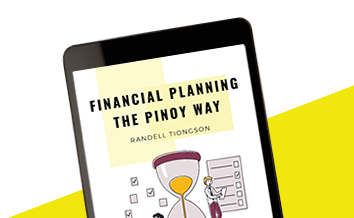Choosing the right life insurance for you, part 1
By Randell Tiongson on June 25th, 2012Question: What are the right criteria for choosing a good life insurance? – Jeremy Jessley Tan (@jeremyjessley) via Twitter
Answer:
Let me congratulate you first for your decision to consider life insurance. Although hugely important in personal financial planning, life insurance like many other financial instruments, aren’t really on the top of mind of many Filipinos. The percentage of our insured population is so low we are subjected to so much personal risk that will have a devastating effect to our lives.
I’m not sure if your query relates to life insurance programs or life insurance companies so let me just try to answer both.
Before buying life insurance, it is important to determine if you need one or not. If there are people dependent on your income like your spouse, children, parents or siblings, then chances are you really need one. On the other hand, if you are single and have no one who depend on your income – you probably would want to defer buying a life insurance policy until such a need arises. If you are considering buying a life insurance policy strictly as an investment, do consider other instruments that will suit such a need. Life insurance should be purchased because of the need to manage life’s risks, primarily against untimely death and serious physical breakdown (disability). Accumulation of life insurance fund values for investment purposes should only be a secondary reason – icing on the cake so to speak.
It is wise to first determine the amount of life insurance you need. A professional insurance adviser should be able to do an honest to goodness insurance needs analysis for you or better yet, make one for yourself. Here’s a simple way for you to determine the amount of insurance you need. On a sheet of paper (or excel sheet if you must), divide into two parts vertically. On the left side, put a heading and call it “Needs” and on the right call it“Sources”. Under the needs section, think of expenses that needs to be paid should you experience untimely death like hospitalization, burial costs, any outstanding obligation and about 3 months worth of expenses (label this as miscellaneous) – get the sub-total and label it as “immediate expense”. If you have any schooling children, it is best to determine education needs also as this will be a primary concern of those who you will leave behind. A simple way to do this is to get the estimated yearly educational and multiply it by the remaining number of years until they graduate. There’s no need to compute for the future value of education as we are merely allocation an educational fund that should be invested eventually. Label the sub-total as “educational expenses”. The 3rd and final component of your “Needs” section is determining the living costs of your loved ones. Multiply your monthly need by 12 to get the annual expenses as it is easier to plan on an annual basis. Divide the annual amount by an estimated investment rate. The sum is a fund that can be invested to give perpetual interest payments to be used for living expenses.
On the right side of your sheet called “Sources”, try to think of all the sources that can generate funds should the need arises such as cash, investments, real estate and life insurance proceeds. It may not be a good idea to include your home as a source of cash as your family will need to keep the home.
Deduct the total sources from your total needs and the balance is an amount you should consider for additional life insurance. Note that life insurance is not your only option to narrow the gap between needs and sources but it is definitely the cheapest and fastest way to bridge the gap. Life insurance can also be a temporary solution as you build your other assets like cash, investments and real estate.
Below is a simple illustration on how a life insurance analysis may look:
Now that you know how much you need, the next thing you need to determine is what kind of life insurance you should get and from which life insurance company should you buy from. I will try to answer those in the next instalment of this column.
… to be continued.


